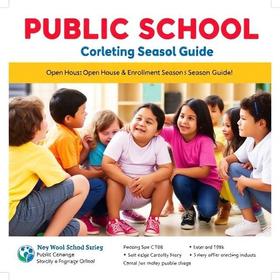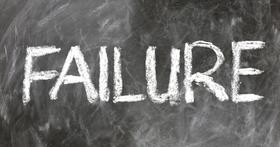An evaluation specialist at one of the largest school districts in the country claims to have found a system for determining academic success from a very young age. The Montgomery County Public Schools employee, Thomas C. West, has announced that he has developed a tracking system that can predict high school dropouts as early as the first grade. Does it work? And more importantly, is it even ethical to use such a system on children just starting out in the wide world of academia?
“Startling Accuracy” Seen with System
Time reports that West’s tracking formula can predict dropout rates with “startling accuracy.” The formula can be utilized as early as the second semester of first grade and incorporates many of the usual factors for predicting academic success. These factors include behavior issues, reading skills, and frequency of school absences.
A study conducted on the formula by researchers at Johns Hopkins University shows the system can identify 75 percent of future potential dropouts as early as the first grade. According to 360 Education Solutions, the red flags indicate two factors – a lack of student motivation and a lack of academic success. While these factors may not be news to educators, the new identification formula has much more than a little interest.
This video describes early warning systems to support students at risk of dropping out of school.
Getting Clues Early
The primary difference is in how early and accurately this type of data may be collected and analyzed today. In the past, it would take months or even years for schools to accurately assess a student’s abilities. This time allowed students to mature or improve their skills without teachers and administrators writing off potential problem students too soon.
The new digital age has allowed for the nearly instantaneous compilation of the same data, which provides teachers with the resources necessary to predict student success at a much earlier age. However, this prompt availability of information has also led to ethical questions within the academic world. Is it appropriate to tell a first-grader he is destined to be a high school dropout?
On the other hand, early intervention, through identifying risk factors, can be an effective tool in turning a student around before it is too late.
“It’s a very sobering point, but I take it an opportunity: if these kids are always with us, we can do something about this,” West told 360 Education Solutions. “Remember, these are signs of students who drop out – it doesn’t mean they are dropouts.”
Some of the factors that increase a first grader’s risk for eventually dropping out of school, according to the study, include:
- One or more suspensions, both in and out of school
- Nine or more absences from school within their first-grade year
- Having a third-marking period grade point average of 1.20 or lower
- Testing below grade level in reading or mathematics
These factors can make a student anywhere from two to five times more likely to drop out of school by high school than their peers. The numbers worsen as a student advances in grade level as well. For example, frequent absences increase the dropout risk for a third grader even more than if those absences occur in first grade.
This video looks at the dropout epidemic.
Research Supporting New Formula
This study by Johns Hopkins is not the only research that supports the idea that early school performance indicates overall academic success. The Annie E. Casey Foundation website cites a national study conducted in 2011 that showed students who are not reading proficiently by third grade are four times more likely to drop out of high school.
The study was conducted by the foundation, the Center for Demographic Analysis at the University of Albany, and the Foundation for Child Development. Researchers looked at 4,000 students nationally and found that one in six students that are not reading proficiently by third grade is unlikely to finish high school on time, if at all. The study also found that students who are living in poverty have the same risk as subpar readers, even if the poor students are successfully reading at grade level or above by third grade.
The Impact of Third Grade
A report at Creativity Post explains that third grade is often the pivotal year because this is the time when students transition from learning to read to “reading to learn.” Until third grade, students are working on decoding words or relying on their knowledge of their ABCs to read a text.
By fourth grade, students are expected to begin extracting information from the text that will be used in other subjects like math, science, and social studies. If they cannot read proficiently at this time, they will begin to miss much of the knowledge they are supposed to be amassing for all of their subjects. In addition, students may begin to avoid reading out of frustration, which prevents them from background knowledge and understanding of literary terms that one typically gleans from the simple act of reading.
The report goes on to suggest that the ability to identify these red flags at an even earlier age allows educators to use those signs to intervene with students before they begin to get behind academically. However, effectively using those signs to provide appropriate intervention will be the difference between merely telling a first-grader he will be a high school dropout and preventing the fact before it occurs.
“You will not reduce dropout rates by [identifying] the students; it’s what you do with them,” West told 360 Education Solutions. “Early warning systems are not an intervention strategy; they are part of an intervention strategy. They are not a magic bullet.”
Questions? Contact us on Facebook. @publicschoolreview















